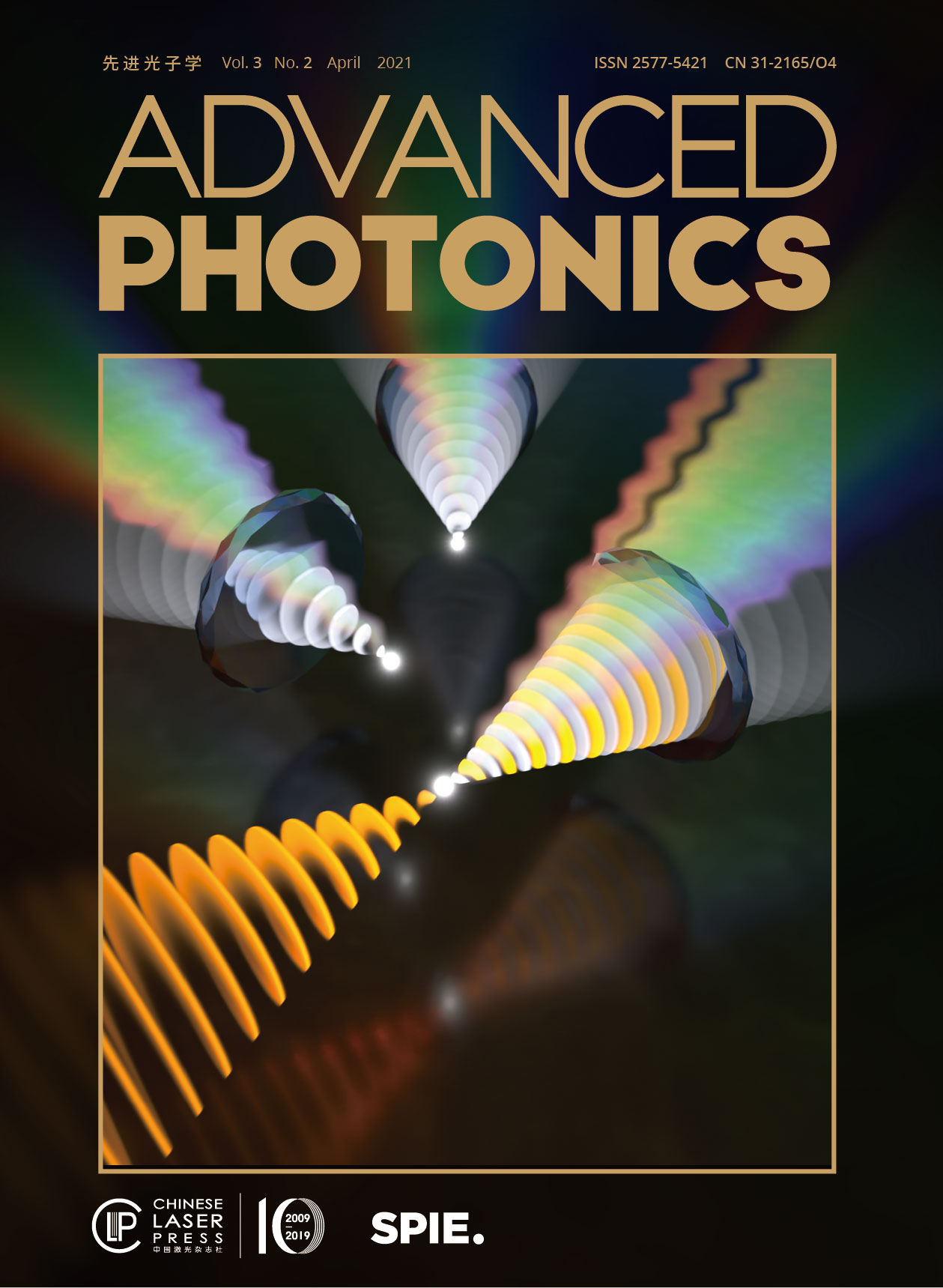- Publication Date: Feb. 26, 2021
- Vol. 3, Issue 2, 024001 (2021)
Integrated photonics is attracting considerable attention and has found many applications in both classical and quantum optics, fulfilling the requirements for the ever-growing complexity in modern optical experiments and big data communication. Femtosecond (fs) laser direct writing (FLDW) is an acknowledged technique for producing waveguides (WGs) in transparent glass that have been used to construct complex integrated photonic devices. FLDW possesses unique features, such as three-dimensional fabrication geometry, rapid prototyping, and single step fabrication, which are important for integrated communication devices and quantum photonic and astrophotonic technologies. To fully take advantage of FLDW, considerable efforts have been made to produce WGs over a large depth with low propagation loss, coupling loss, bend loss, and highly symmetrical mode field. We summarize the improved techniques as well as the mechanisms for writing high-performance WGs with controllable morphology of cross-section, highly symmetrical mode field, low loss, and high processing uniformity and efficiency, and discuss the recent progress of WGs in photonic integrated devices for communication, topological physics, quantum information processing, and astrophotonics. Prospective challenges and future research directions in this field are also pointed out.
.- Publication Date: Mar. 10, 2021
- Vol. 3, Issue 2, 024002 (2021)
- Publication Date: Apr. 29, 2021
- Vol. 3, Issue 2, 024003 (2021)
- Publication Date: Apr. 01, 2021
- Vol. 3, Issue 2, 025001 (2021)
- Publication Date: Feb. 27, 2021
- Vol. 3, Issue 2, 026001 (2021)
- Publication Date: Mar. 18, 2021
- Vol. 3, Issue 2, 026002 (2021)
- Publication Date: Apr. 01, 2021
- Vol. 3, Issue 2, 026003 (2021)
- Publication Date: Apr. 29, 2021
- Vol. 3, Issue 2, 026004 (2021)
About the Cover
The figure contains three identical metasurfaces, each illuminated by a localized source producing a diverging vortex beam originating at a different distance. The metasurface in the foreground shows reflection of a single color (orange), indicating that the surface interacts only with this wavelength and specific wavefront; in this case, the reflected beam is a phase conjugated version of the source (a converging vortex beam). The other scenarios simply transmit, with no distortion in either the wavefront or the spectrum. These Fano metasurfaces are both spatially and spectrally selective, resonantly reflecting only specifically tailored waves.












